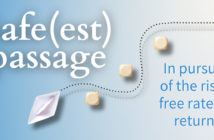How are capital markets mitigating ongoing COVID-19 threats to move toward recovery, and is there good news for borrowers?
As 2022 progresses, the pandemic is looking more like an endemic. Rather than returning to normal, we’re adjusting to a new way of living. Of course, vaccines have been a game-changer, reducing fatalities and controlling hospitalization rates. But low vaccination compliance and new virus variants sparking breakthrough illness make it clear this global menace isn’t going anywhere anytime soon. Fortunately, capital markets are resilient and after grappling with this new reality, debt funds, life-insurance companies, bridge and permanent debt lenders, commercial mortgage-backed securities (CMBS), banks, credit unions, and other types of capital providers are leveraging their experience and data to structure financing that takes the reality of this new environment into account. Let’s look at four examples.
1. PROTECTING LENDERS & INVESTORS
While an influx of new equity in the market is good news for acquisitions, cash out refinances continue to be more difficult to close. Pre-pandemic, CMBS lenders were willing to lend at up to 70% loan-to-value (LTV) on hotel assets. Now, to provide the appropriate protection against value volatility for their investors, LTV for hotel loans is capped at 65%. Lenders also are more sensitive to any pending capital expenditures or outstanding hotel property-improvement plan (PIP). In the old environment, a lender was willing to structure a future funding or defer collecting PIP reserves. After navigating the pandemic, today’s lenders won’t consider closing without an upfront PIP reserve.
2. INSULATING BORROWERS
Lenders also are adding features such as COVID-related debt service reserves to proactively prepare for future pandemic-triggered shutdowns, as well as borrower-favorable force majeure clauses that protect owners in the case of a government-mandated stoppage. One common clause is a cash-management trigger holiday. If the hotel is forced to shut its doors because of COVID-19, the lender won’t test the cash flow against the debt service for that particular quarter. Another common feature being negotiated for new CMBS loans is the ability to use the less cumbersome and more economical yield maintenance pre-payment option instead of defeasance.
3. INCREASED FLEXIBILITY
Historically, CMBS loans haven’t allowed additional debt to be placed on a property after the original loan is in place. This constraint, combined with high pre-payment penalties, have limited borrowers who want the flexibility to sell an asset later without requiring the buyer to put up a large chunk of equity. Recently, however, CMBS lenders have introduced new structures that will allow borrowers to re-leverage a property at a point in the future, by placing additional debt on the asset up to the original LTV. For example, on a recent refinance of a Hampton Inn in Arkansas, we were able to negotiate the future ability to use mezzanine debt to top up the debt to the original LTV and debt-service coverage ratio. As a result, the client is protected against any growth in values and amortization of their debt.
4. BETTER CUSTOMER SERVICE
After so many pandemic-affected borrowers chose to just turn in their keys or move to special servicing because CMBS servicers weren’t listening to their requests, most major CMBS lenders have since established an in-house servicing department to quarterback borrower inquiries. While these lenders are still selling the loan servicing through third-party servicers like Wells Fargo or Key Bank, they are staying involved in the process to give borrowers peace of mind.
Also increasing the attractiveness of CMBS financing are new entries into the cash management arena. Giant Wells Fargo is formally out of the cash management business, opening the door for smaller, more nimble, lower-priced players such as Signature Bank and a renewed focus on customer service.
CMBS MOVING FORWARD
The CMBS market is projected to originate more than $150 billion in loans in 2022, its highest peak since the height of the great financial crisis. This continued success isn’t an accident. CMBS provides an efficient and competitively priced, sustainable capital source, whose benefits outweigh any shortcomings and is available for assets in secondary and tertiary markets. Not only can borrowers take advantage of up to 65% leverage loans on hotel and up to 75% leverage on all other asset classes on a non-recourse basis, they can lock in mid-range 3% rates for as long as 10 years. Furthermore, cash out refinances also are still possible in the world of CMBS and are an efficient way for developers and owners to recapitalize some of their imputed equity. Embracing this type of institutional debt, however, does push borrowers and owners to become more institutional overall. CMBS financing is not for everybody, so the best approach is to talk to an industry expert to see if it’s a good fit for you and your business.
is Principal and CEO of the commercial mortgage and real estate investment banking firm and AAHOA Allied Member Mag Mile Capital. As a leader in hospitality financing, Shah specializes in structuring and placing high leverage, nonrecourse bridge and permanent debt with cash out for full- and limited-service hotels nationwide. Since joining the firm’s predecessor, Aries Capital, in 2015, Shah has structured and closed hundreds of millions in financing for all property types. Shah has held previous positions at Northern Trust and has an MBA from the University of Chicago’s Booth School of Business.


 Rushi Shah
Rushi Shah

